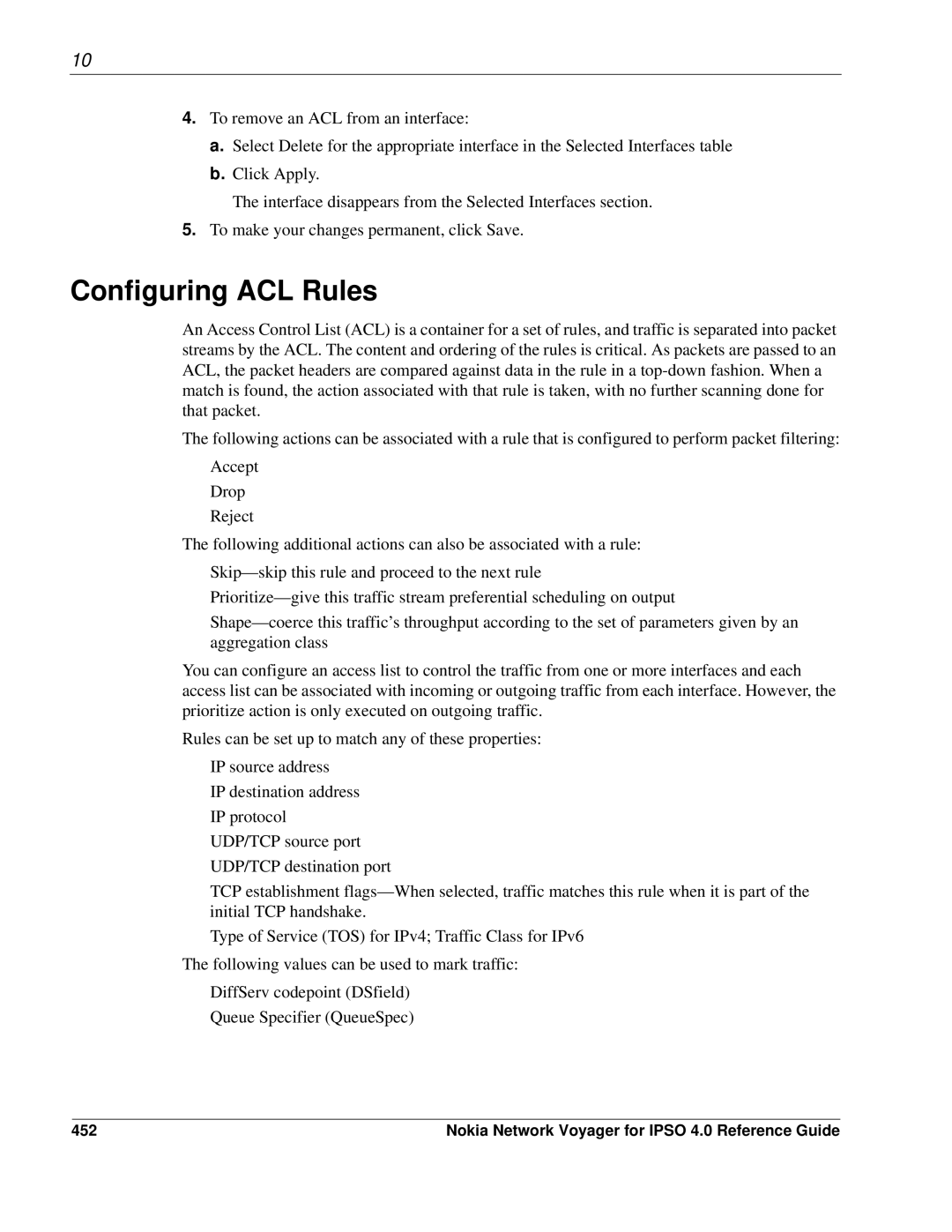
10
4.To remove an ACL from an interface:
a.Select Delete for the appropriate interface in the Selected Interfaces table
b.Click Apply.
The interface disappears from the Selected Interfaces section.
5.To make your changes permanent, click Save.
Configuring ACL Rules
An Access Control List (ACL) is a container for a set of rules, and traffic is separated into packet streams by the ACL. The content and ordering of the rules is critical. As packets are passed to an ACL, the packet headers are compared against data in the rule in a
The following actions can be associated with a rule that is configured to perform packet filtering:
Accept
Drop
Reject
The following additional actions can also be associated with a rule:
You can configure an access list to control the traffic from one or more interfaces and each access list can be associated with incoming or outgoing traffic from each interface. However, the prioritize action is only executed on outgoing traffic.
Rules can be set up to match any of these properties:
IP source address
IP destination address
IP protocol
UDP/TCP source port
UDP/TCP destination port
TCP establishment
Type of Service (TOS) for IPv4; Traffic Class for IPv6
The following values can be used to mark traffic:
DiffServ codepoint (DSfield)
Queue Specifier (QueueSpec)
452 | Nokia Network Voyager for IPSO 4.0 Reference Guide |
